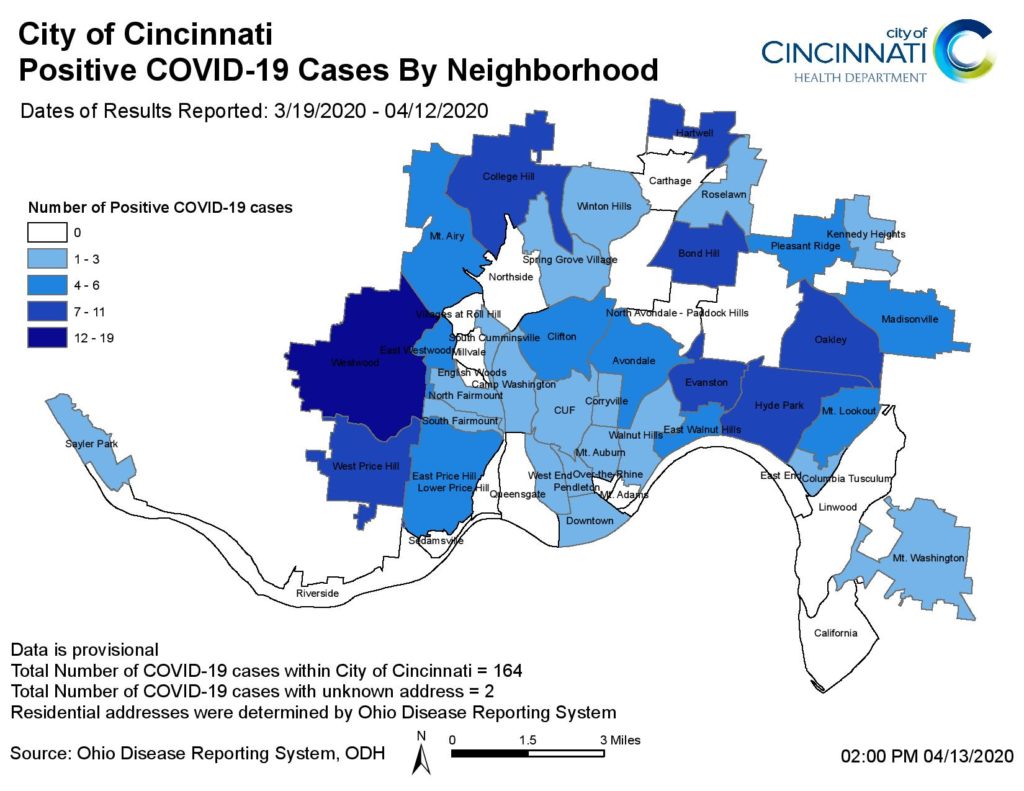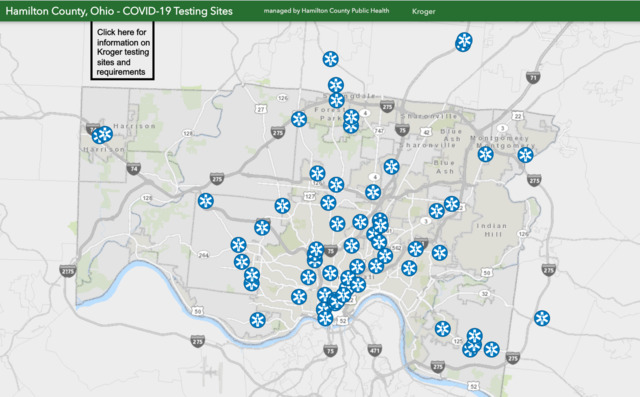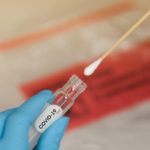It is clear that the coronavirus is still a danger as the pandemic continues to spread and cases spike around the nation and in our own county. As an advocacy and research organization, the Urban Appalachian Community Coalition takes a particular interest in how the coronavirus impacts the Appalachian communities in the greater Cincinnati area. The most recent research on the ways coronavirus is currently emerging around the area shows us that the Appalachian communities are at risk.
The Cincinnati Health Department began tracking coronavirus in greater Cincinnati on March 23 of this year. As of June 1, there have been 1,129 confirmed cases, 230 hospitalizations, 52 deaths, and 694 recorded recoveries. These numbers reveal alarmingly high cases on the westside of the city. West Price Hill, East Price Hill, and Westwood have experienced markedly high incidents of confirmed cases of coronavirus, and these neighborhoods are historically populated by Appalachian communities. To cite more numbers in order to see the scale of the issue, Avondale has a population of 13,967 and 47 confirmed cases or .0034 per capita. East Price Hill has a population of 14,224 and 154 cases or a per capita occurrence of .0108. The rate of confirmed cases of coronavirus on west side of Cincinnati is dramatically higher than other than most other parts of the city.

The Research Committee, as an integral part of UACC, is paying close attention to make certain that no part of the city is left out of monitoring, testing and treatment. This kind of work is central to the mission of UACC. Combining both advocacy and research has led UACC to make some forceful changes in Cincinnati. As far back as the 1980s, for example, UACC’s predecessor the Urban Appalachian Council, took an interest in high dropout rates among urban Appalachian students. Through a combination of research on this issue and advocacy with the city and members of the business community, UAC was successful in compelling city leaders and school administrators to take notice of the high dropout rates and, more significantly, to take action. In addition to increasing retention rates, Oyler School in Lower Price Hill and Riverfront Academy on the eastside are two obvious results of the work of UAC.
The Urban Appalachian Community Coalition is bringing the same combination of research and advocacy to the impact of coronavirus on urban Appalachians and greater Cincinnati more generally. As core member Mike Maloney explained, “Two weeks ago I inquired about the number of testing sites around Cincinnati. At that time there were eight testing sites on the east side and one on the west side. Since I began asking about this, the number of test sites on the west side has increased to ten.” The UACC research committee, as Mike Maloney points out, makes it possible for advocacy work to be more effective. As Mike approached the problem of the impact of coronavirus on the westside, he was able to get some real results.
UACC is always aware of the fact that the urban Appalachian community is situated within all the communities that make up greater Cincinnati. By paying attention to the research on coronavirus and how it is impacting the city, UACC can bring benefits to all concerned, not just Appalachians. Urban Appalachians are embedded in neighborhoods that include the full range of people who make up Cincinnati, and our efforts often involve working directly with other advocacy organizations toward maximum benefits for all concerned.
Mike Maloney told me that the state of Ohio is providing resources and funding for outreach workers to attend to areas that are particularly hard-hit by coronavirus. Mike Maloney, and other members of UACC, are working to ensure that at least one of these outreach workers is assigned to the Appalachian Community. The attention UACC pays to these kinds of efforts will ultimately benefit everyone, especially our at-risk low-income and working class communities.

The Centers for Disease Control and Prevention provide guidelines on how to protect yourself and how to slow the spread of coronavirus at https://www.cdc.gov/coronavirus/2019-ncov/prevent-getting-sick/prevention.html. A map of Hamilton County testing sites can be found here: http://cagisportal.maps.arcgis.com/apps/webappviewer/index.html?id=8a2a1ff673af49f88a25ff88a261553c
In addition to Mike Maloney’s research, Dr. Ashley Hopkins, chair of the UACC Research Committee, is part of the planning of a rural and urban Appalachian research project being proposed by the UC-based Appalachian Translational Research Network (ATRN), a regional network of university health experts. If funded, the project will include Cincinnati. The Urban Appalachian Community Coalition is working to further the research, through the UACC Research Committee, and to advocate on behalf of the urban Appalachian community. These efforts are to provide the best prevention and testing options as coronavirus continues to pose a threat to the health of the city of Cincinnati and around the nation.
Mike Templeton is a writer, independent scholar, barista, cook, guitar player, and accidental jack-of-all-trades. He lives in downtown Cincinnati with his wife who is a talented photographer. They spend their free time walking around the city snapping photos. She looks up at that the grandeur of the city, while Mike always seems to be staring at the ground.

